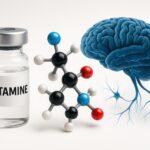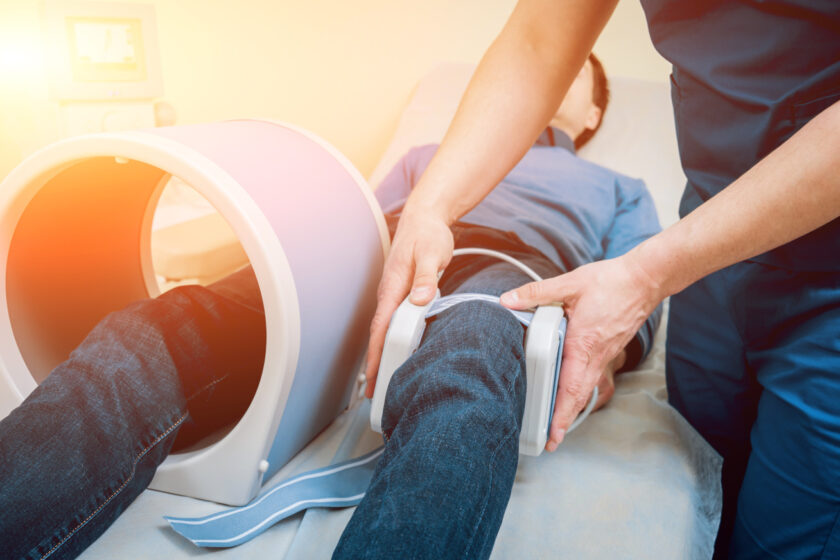If you’re struggling with treatment-resistant depression, chronic pain, or other mental health conditions that haven’t responded to traditional treatments, you may have heard about ketamine infusion therapy as a potential breakthrough option. What is ketamine infusion therapy exactly, and could it be the solution you’ve been searching for?
Understanding Ketamine: From Anesthetic to Mental Health Treatment
Ketamine was first developed in the 1960s and approved by the FDA in 1970 as an anesthetic for surgical procedures. Unlike traditional anesthetics, ketamine works by blocking NMDA receptors in the brain, which led researchers to discover its unique antidepressant properties in the 1990s.
This breakthrough discovery revealed that ketamine works through an entirely different mechanism than conventional antidepressants like SSRIs. Instead of affecting serotonin levels, ketamine increases glutamate activity, promoting the growth of new neural connections and essentially “rewiring” the brain to break free from negative thought patterns.

What Is Ketamine Infusion Therapy Used for?
Ketamine infusion therapy has shown remarkable effectiveness for several mental health and chronic pain conditions. The primary use is for treatment-resistant depression, which affects nearly one-third of the nine million Americans treated for depression annually. When at least two traditional antidepressants have failed to provide relief, ketamine offers new hope.
Beyond depression, research shows that ketamine infusion therapy is effective for bipolar disorder, post-traumatic stress disorder (PTSD), anxiety disorders, obsessive-compulsive disorder (OCD), and chronic pain conditions. The therapy has also shown promise for treating suicidal ideation, often providing rapid relief when patients are in crisis. To understand whether you might benefit from treatment, learn about who is a good candidate for ketamine therapy.
The Science Behind How Ketamine Infusion Therapy Works
What is ketamine infusion therapy doing in your brain? The process begins when ketamine blocks NMDA receptors, leading to increased production of glutamate, the brain’s most abundant neurotransmitter. This surge of glutamate activates AMPA receptors, triggering a cascade of molecular changes that promote neuroplasticity.
This enhanced brain plasticity allows for the formation of new neural pathways and the strengthening of existing connections. Scientists believe this “rewiring” effect explains why ketamine can rapidly lift depression and why other treatments may work better after ketamine therapy, even if they failed before.
What Is Ketamine Infusion Therapy Like? The Treatment Experience
Asking “What is ketamine infusion therapy like?” before starting treatment can help reduce your anxiety about the treatment process. Sessions typically take place in a comfortable, clinical setting with continuous medical supervision. Before treatment begins, vital signs are checked, and an IV line is established in your arm.
The actual infusion usually lasts 40–60 minutes, during which you may experience mild dissociative effects, such as feeling detached from your surroundings or having vivid thoughts and sensations. These effects are temporary and completely normal. Most patients find the experience peaceful, and some even describe it as insightful or therapeutic.

Treatment Protocols and What to Expect
A typical ketamine infusion therapy protocol involves an initial series of 6–8 treatments over 3–4 weeks, with sessions spaced 2–3 days apart. This induction phase allows the treatment to build momentum and establish lasting changes in brain chemistry. Many patients begin noticing improvements after just 2–3 sessions.
Following the initial series, maintenance treatments are typically scheduled monthly or as needed to sustain benefits. The frequency of maintenance sessions varies significantly between individuals, with some patients requiring treatment every few weeks while others maintain benefits for several months between sessions.
Potential Side Effects and Safety Profile
While ketamine infusion therapy is generally well-tolerated, understanding potential side effects is important for informed decision-making. During treatment, patients may experience temporary increases in blood pressure and heart rate, mild nausea, dizziness, or dissociative effects. These effects typically resolve within hours of treatment completion.
Long-term side effects are rare when treatment is administered properly in clinical settings. However, certain medical conditions may make ketamine therapy inadvisable. For detailed information about contraindications, review our guide on who is not a good candidate for ketamine therapy.
How Experience Structured Living Can Help
At Experience Structured Living, we understand that exploring ketamine infusion therapy represents hope after traditional treatments have fallen short. Our experienced medical team provides comprehensive evaluation, personalized treatment protocols, and ongoing support throughout your ketamine therapy journey.
Our ketamine therapy in San Diego combines cutting-edge ketamine infusion therapy with integrated mental health care, ensuring that your treatment addresses not just symptoms but underlying patterns and triggers. Our goal is to help you achieve lasting recovery and return to a fulfilling, structured life with renewed hope and resilience.
FAQs About Ketamine Infusion Therapy
How quickly does ketamine infusion therapy work?
Many patients notice improvements within 24–72 hours after their first treatment, with effects continuing to build over the initial treatment series. This rapid onset is one of ketamine's most remarkable features compared to traditional antidepressants that take weeks to show effects.
How long do the effects of ketamine infusion therapy last?
Initial effects typically last 1–2 weeks, which is why multiple treatments are needed initially. After completing an induction series, many patients maintain benefits for weeks to months between maintenance treatments.
Is ketamine infusion therapy covered by insurance?
Coverage varies significantly by insurance provider and plan. While IV ketamine is not FDA-approved specifically for depression, many insurers are beginning to cover treatments for qualified patients. We recommend contacting your insurance provider to understand your coverage options.
Can I drive after ketamine infusion therapy?
No, you should not drive for at least 24 hours after treatment due to potential lingering effects on cognition and coordination. We recommend arranging transportation to and from your appointments.
What's the difference between ketamine infusion therapy and esketamine nasal spray?
Esketamine (Spravato) is an FDA-approved nasal spray form of ketamine for treatment-resistant depression. IV ketamine infusion allows for more precise dosing and has been more extensively studied, though both can be effective treatment options.

Dr. Melden earned his Doctorate in Osteopathic Medicine at Philadelphia College Osteopathic Medicine and went to USC Presbyterian Hospital for his residency in Family Medicine. He then completed his Psychiatric residency at the University of California, Irvine and went to UCSD Geropsychiatry pursuing a fellowship. Dr. Melden has over 14 years of experience as a clinician specializing in treating child and adolescent, adult and geriatric clients. He has devoted his life to psychiatry in a variety of different treatment settings including in- patient and out-patient environments. He specializes in the psychiatric evaluation, complementary therapy approaches, and medical management of individuals suffering from mental illness. Currently, he maintains a private practice with Crownview Medical Group in Coronado and Carlsbad, California where he is CEO/President.




